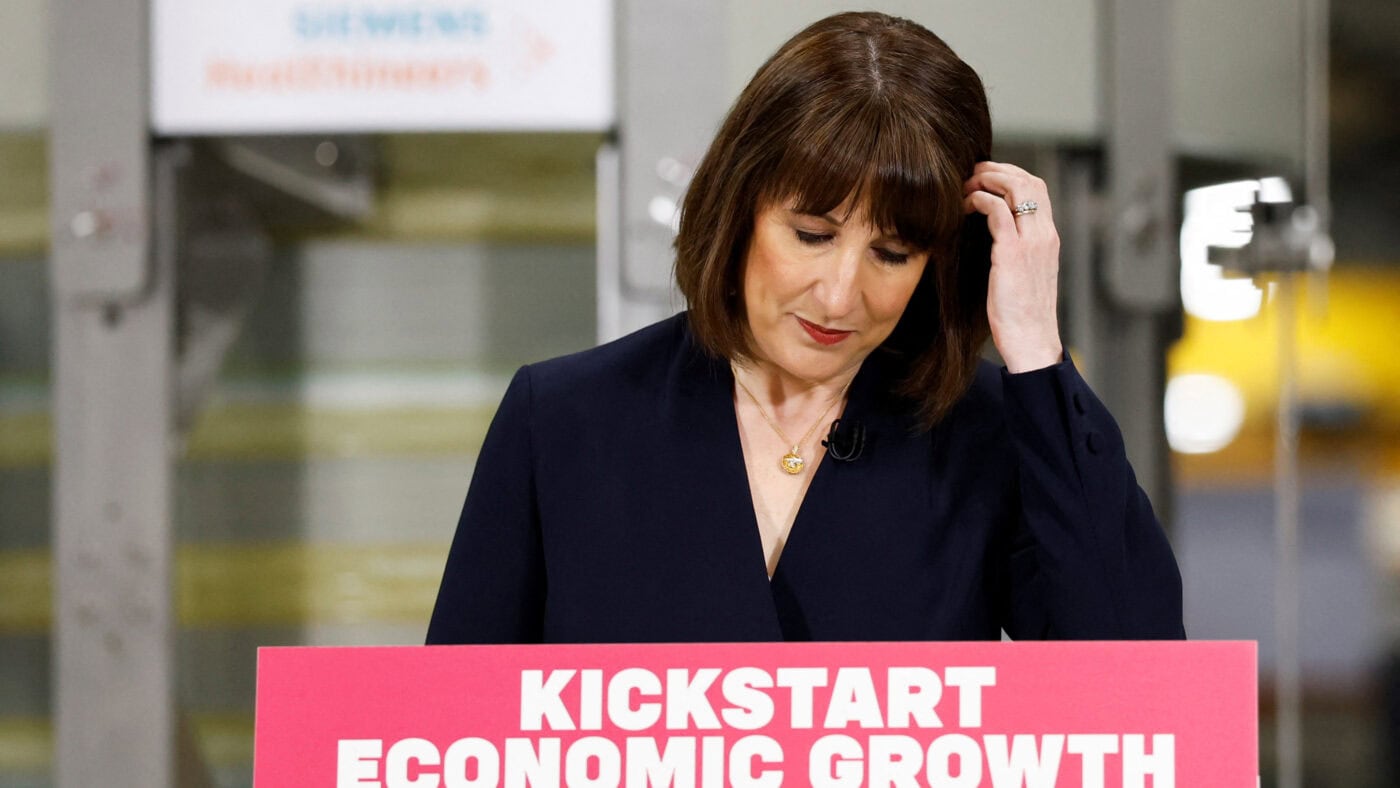It’s barely a week since Rachel Reeves made her agenda-setting speech on how the Government intends to ‘kickstart economic growth’. Yet while her commendable rhetoric may have enabled the Chancellor to bask in 24 hours of optimistic headlines about future prosperity, economic reality is biting once again in the cold light of day.
Monday saw the EY Item Club become the latest forecaster to downgrade its growth projection for the UK economy in 2025 to a mere 1% increase in GDP, down from the 1.5% it had been predicting as recently as October. This was echoed by this morning’s announcement from the Bank of England that it was halving its growth forecast for this year from 1.5% to just 0.75%. And, lest we forget, the most reliable measure of overall living standards is GDP per capita, which takes into account changes in population – so if the population rises by around 1% (which it has done in several recent years as a result of net immigration), this would cancel out any 1% rise in GDP over the course of the year, leaving British families feeling no more wealthy.
Meanwhile, gloomy reports emerged yesterday from the Office for Budget Responsibility (OBR) in its first official estimate of the state of the economy ahead of the Spring Statement Reeves is due to give at the end of March. She will reportedly will have no choice but to cut spending or increase taxes because any leeway in the public finances has ‘evaporated’, in no small part because of lower than anticipated growth.
That growth will be lower than the OBR and Treasury expected will come as no surprise to those who have followed the work of my organisation, the Growth Commission, over recent months. Ahead of her Budget in October, we made a series of policy recommendations to the Chancellor: not only did she take far too few of them on board, but she proceeded to announce a number of policies which we specifically warned would be detrimental to growth, such as hiking employers’ National Insurance contributions and increasing the minimum wage, along with the changes she made to Capital Gains Tax, pensions, Inheritance Tax and the taxation of non-doms. Our calculations immediately afterwards found that her Budget would cause a hit to GDP per capita (as a percentage of annual GDP) of 0.4% in 2025/26, 3.4% in 2030/31, 3.8% in 2040/41 and 4.1% in 2045/46.
The fact that the Government’s official projections always overestimate growth is down to an overreliance on static economic modelling which suggests that raising a tax will always result in an equivalent increase in receipts to the Treasury. The reality is that varying tax rates causes changes in behaviour and people making different decisions about investments, taking on employees and so on. Such effects are captured in the dynamic economic models we use at the Growth Commission, which is why the Government would do well to take heed of our advice.
So, aside from revisiting our pre-Budget recommendations, what ought Reeves to be doing now?
For a start, ministers need to be honest with the public – and themselves – about the trade-offs involved in promoting pro-growth policies. For example, the Government’s Net Zero ambitions currently require costly policies like the Carbon Border Adjustment Mechanism and inefficient emissions trading schemes that choke off growth. The UK has the highest energy costs in the developed world and that is killing growth – yet they are so high precisely because of the Net Zero policies that have been pursued by successive administrations. These policies urgently need to be reviewed since they clearly conflict with the Government’s stated aim of achieving growth as its ‘number one priority’.
The same is also true in the sphere of labour market flexibility where there is a trade-off between growth and the so-called protections which the Government is intent on imposing on business. Our models show that labour market flexibility is one of the biggest drivers of improving competition and, therefore, increasing GDP per capita – yet many of the measures in the Employment Rights Bill will actively hinder growth.
Ministers also need to be absolutely clear right now on the importance of retaining an independent trade policy and regulatory autonomy. In respect of the Government’s current negotiations with the EU, there is some misunderstanding as to why the Prime Minister’s ‘red lines’ (no to a customs union and the single market) are as they are. There is nothing magical about these: these are red lines because they would limit the UK’s independent trade policy and regulatory autonomy, both of which are essential for economic growth. But they do allow a host of measures to be taken which mitigate the disruptions of trade between the UK and EU.
If Keir Starmer’s red lines are real, and the customs union and single market merely expressions of them, then many things like youth mobility schemes, Pan-Euro-Mediterranean Convention membership and mutual recognition should absolutely be pursued (as could some unilateral recognition), but anything like dynamic alignment or regulatory harmonisation with the EU should be avoided.
All of this is critical if we are to be well placed to negotiate a meaningful trade deal with the nation which is our largest single trading partner, the US, whose recently installed President has long signalled a desire for such a deal. This would be of huge economic benefit to both countries and help kickstart the economic growth the Chancellor wishes to deliver.
Click here to subscribe to our daily briefing – the best pieces from CapX and across the web.
CapX depends on the generosity of its readers. If you value what we do, please consider making a donation.


